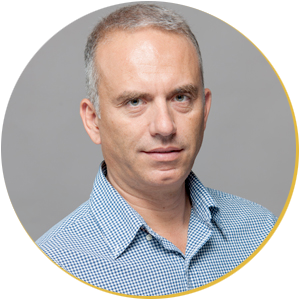
Professor
 Research Interests: Computational and mathematical modeling, biotransport, signal transduction, cardiovascular and respiratory systems physiology
Research Interests: Computational and mathematical modeling, biotransport, signal transduction, cardiovascular and respiratory systems physiologyResearch Advancements: Nikolaos Tsoukias studies neuromuscular coupling.
Research Area: Engineered Tissue Model Systems
Lab: Vascular Physiology and Biotransport
Website: https://bme.fiu.edu/people/faculty-instructors/nikolaos-tsoukias
Biography
Dr. Nikolaos Tsoukias received his B.S. in Chemical Engineering from the National Technical University of Athens, Greece in 1994. He received a doctorate in Engineering from the University of California, Irvine in 1999. Upon completion of a three-year research fellowship at the Johns Hopkins University School of Medicine, he joined Florida International University as an Assistant Professor in 2003. His research interests are in the areas of mathematical modeling, systems physiology and biotransport. Dr. Tsoukias is a regular member of the Biomedical Engineering Society, the Microcirculatory Society and the American Physiological Society. Dr. Tsoukias established the laboratory of Vascular Physiology and Biotransport at FIU in 2003. He was the 2006 recipient of the Arthur C. Gyuton award for excellence in integrative physiology. His research has been supported by the American Heart Association and the National Institutes of Health. He has authored more than 50 peer reviewed publications in archived journals, contributed more than 75 abstracts in conference proceedings and received 2 patents.
Lab Website
Selected Publications
Tsoukias, N. M., Z. Tannous, A. F. Wilson and S. C. George. Single Exhalation Profiles of NO and CO2 in Humans: Effect of Dynamically Changing Flow Rate. Journal of Applied Physiology 85(2):642-652, 1998.
Tsoukias, N. M. and S. C. George. A Two-Compartment Model of Pulmonary Nitric Oxide Exchange Dynamics. Journal of Applied Physiology 85(2):653-666, 1998.
Tsoukias, N. M. and S. C. George. A Single Breath technique with variable flow rate to characterize Nitric Oxide Exchange Dynamics in the Lungs. Journal of Applied Physiology 91(1):477-487, 2001.
Tsoukias, N.M. and A.S. Popel. Erythrocyte consumption of Nitric Oxide in the presence and absence of plasma-based Hemoglobin. American Journal of Physiology 282(6):H2265-77, 2002.
Kavdia M., N.M. Tsoukias and A.S. Popel. A model of Nitric Oxide diffusion in an arteriole: impact of hemoglobin based blood substitutes. American Journal of Physiology 282(6):H2245-53, 2002.
Tsoukias, N.M. and A.S. Popel. A model of nitric oxide capillary exchange. Microcirculation 10(6): 479-95, 2003.
Tsoukias, N.M., M. Kavdia and A.S. Popel. A theoretical model of nitric oxide transport in arterioles: frequency vs amplitude dependent control of cGMP formation. American Journal of Physiology 286(3):H1043-56, 2004.
Kapela, A.., Tsoukias N.M. and A. Bezerianos. New aspects of vulnerability in heterogeneous models of ventricular wall and its modulation by loss of cardiac sodium channel function. Medical & Biological Engineering & Computing 43(3):387-94, 2005.
Ji, J.W., N.M. Tsoukias, D. Goldman, and A.S. Popel. A computational model of oxygen transport in skeletal muscle for sprouting and splitting modes of angiogenesis. Journal of Theoretical Biology 241(1):94-108, 2006.
Tsoukias, N. M., D. Goldman, A. Vadapalli, R. N. Pittman and A. S. Popel. A computational model of oxygen delivery by hemoglobin-based oxygen carriers in three dimensional microvascular networks (submitted), 2006.
Silva H.S., A. Kapela and N.M. Tsoukias.A mathematical model of plasma membrane electrophysiology and calcium dynamics in vascular endothelial cells. (submitted), 2006.
